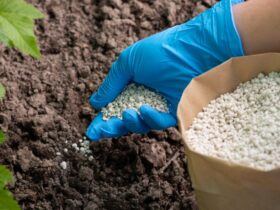Storms can cause serious damage to your roof, putting your home at risk. From high winds to heavy rain, even a small storm can leave you with costly repairs. It’s important to know what to watch out for.
Roof damage often leads to leaks, mold, and even structural issues. Fixing the problem early can save you time and money. In this blog, we will discuss the most common types of roof storm damage and their repair solutions.
Hail Damage and the Impact on Shingles
Hail can cause serious roof storm damage. When hail hits shingles, it can create dents and cracks. These issues may lead to leaks and further damage down the road.
Repairing hail damage typically involves replacing affected shingles. Homeowners can find hail damage solutions provided by roofing experts. Finding an experienced contractor ensures proper inspection and repair work.
Wind Damage: Lifting and Missing Shingles
Strong winds can lift and even remove shingles from roofs. Missing or lifted shingles increase the risk of leaks and water damage. Homeowners should check for signs of wind damage, especially after storms.
Wind damage repair is crucial to prevent larger issues. Roof inspections after strong winds can help identify and fix problems early. Addressing these repairs quickly protects your home from further risks.
Water Leaks and Roof Flashing Issues
Leaks are a common consequence of severe weather. Roof flashing may become damaged during storms, allowing water to enter. This can lead to extensive interior damage if not addressed quickly.
Regular storm roof inspections can catch these problems early. Homeowners should look for signs of water damage inside their homes. Quick action leads to emergency roof repairs when necessary.
Debris Damage: How Fallen Trees and Branches Affect Roofs
Fallen trees and branches can cause significant roof storm damage. They may puncture shingles or create large holes in roofs. Even small twigs can scratch surfaces and weaken them over time.
Repairing debris damage often involves removing the obstructions first. Once cleared, roofing damage restoration can begin. Prompt repairs secure the roof’s integrity, keeping the home safe.
Snow and Ice Damage: Ice Dams and Structural Strain
Snow and ice can lead to serious issues on a roof. Ice dams form when melting snow refreezes at the edge. This can cause water to back up and leak into the home.
Structural strain from heavy snow loads can cause roofs to sag. Regular maintenance helps prevent these issues from becoming severe. Homeowners should monitor conditions and make repairs as needed.
Granule Loss from Heavy Rain
Heavy rain can wash away granules from shingles quickly. This loss exposes the underlayment, leading to faster damage. Homeowners should check for signs of granule loss after heavy storms.
Restoring granules may not be possible, so replacement is often necessary. For reliable roof repair services, you can visit https://adamsandsonsroofing.com. Seeking expert service can help determine the best course of action.
Protect Your Home by Addressing Roof Storm Damage
Roof storm damage can lead to bigger problems if left untreated. Fixing damage quickly will prevent leaks, mold, and structural harm. Regular roof inspections help catch problems before they worsen.
Hiring an expert for repairs ensures your roof stays strong and secure. Whether it’s hail, wind, or water damage, quick action is key. Protect your home and stay safe by addressing roof storm damage as soon as possible.
Did this article help you? If so, take a look at some of our other blog posts for more informative reads.








Leave a Reply